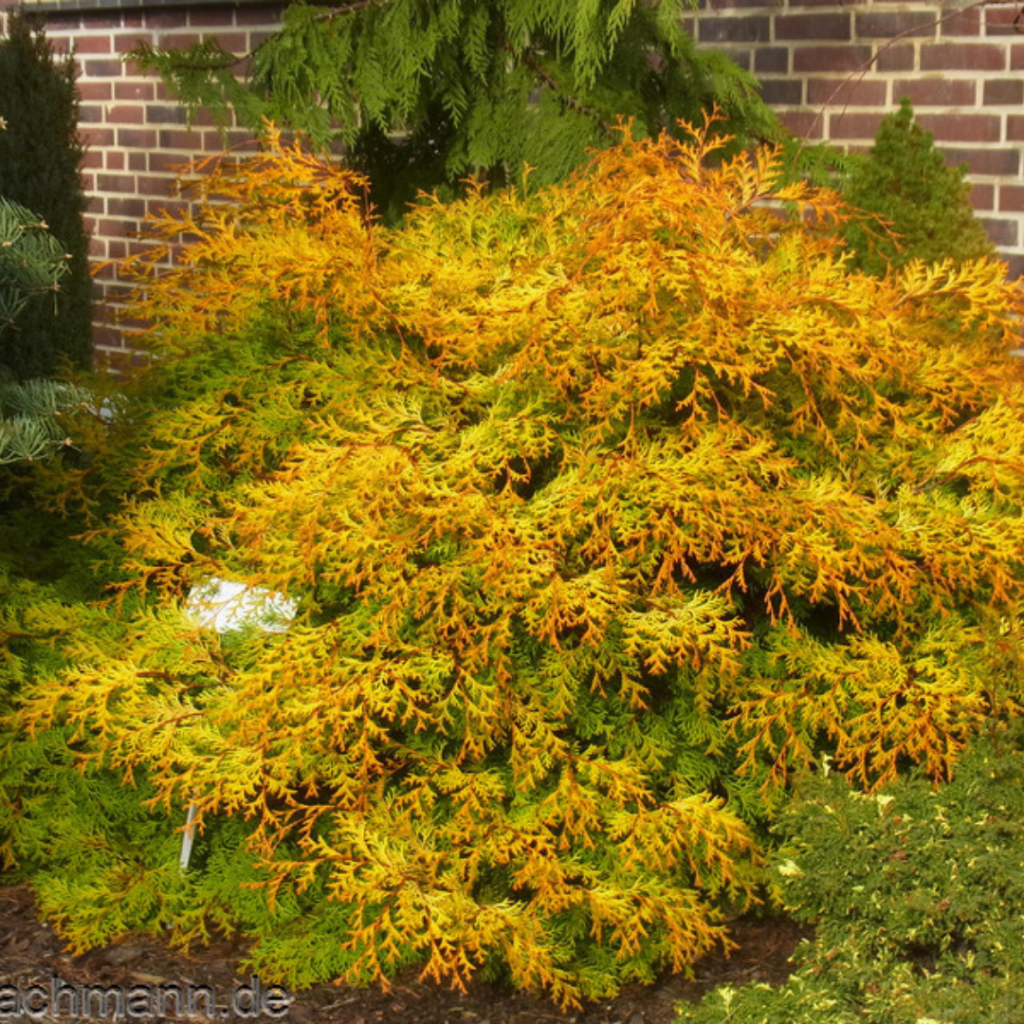Chamaecyparis Obtusa ‘Kamarachiba,’ commonly known as Hinoki Cypress, is an exquisite evergreen tree celebrated for its elegant form and cultural significance in Japanese gardens. This article explores its botanical features, cultivation methods, landscaping uses, and benefits.
Contents
Botanical Characteristics
Chamaecyparis Obtusa ‘Kamarachiba’ features dense, feathery foliage in shades of green, with a distinctive pyramidal growth habit. Its branches form graceful, layered tiers, creating a visually appealing silhouette.

Cultivation and Care
To thrive, Chamaecyparis Obtusa ‘Kamarachiba’ requires well-drained soil and a location with partial to full sun exposure. Regular watering is crucial, especially during the establishment phase, to ensure adequate moisture levels. Pruning can be done to shape the tree and remove any dead or damaged branches.
Landscaping Applications
Chamaecyparis Obtusa ‘Kamarachiba’ serves as a versatile element in garden landscapes, suitable for various applications. It can be used as a specimen tree, hedge, or screen, adding structure and visual interest to outdoor spaces. Its graceful form and evergreen foliage make it an ideal choice for Japanese-inspired gardens and traditional landscapes.
Benefits and Considerations
One of the key benefits of Chamaecyparis Obtusa ‘Kamarachiba’ is its aesthetic appeal, which enhances the beauty of garden settings. Additionally, it holds cultural significance in Japanese gardens, symbolizing longevity, resilience, and tranquility.

Chamaecyparis Obtusa ‘Kamarachiba’ stands out as a captivating and culturally significant evergreen tree, prized for its elegant form and ornamental value. With proper care and maintenance, it enriches garden landscapes, embodying timeless beauty and symbolism.
FAQs About Chamaecyparis Obtusa ‘Kamarachiba’
- How tall does Chamaecyparis Obtusa ‘Kamarachiba’ grow?It typically reaches a height of 20 to 30 feet at maturity, with a spread of 10 to 15 feet, making it suitable for medium to large garden spaces.
- Does Chamaecyparis Obtusa ‘Kamarachiba’ require pruning?While pruning is not necessary for the health of the tree, light pruning can be done to maintain its shape and remove any dead or diseased branches.
- What is the cultural significance of Chamaecyparis Obtusa ‘Kamarachiba’ in Japanese gardens?In Japanese culture, Hinoki Cypress trees are revered for their association with longevity, resilience, and tranquility. They are often featured in traditional gardens and used in religious ceremonies.
- How often should Chamaecyparis Obtusa ‘Kamarachiba’ be watered?It should be watered regularly, especially during dry periods, to ensure adequate moisture levels in the soil. However, it is essential to avoid overwatering, as it can lead to root rot and other issues.
- Is Chamaecyparis Obtusa ‘Kamarachiba’ deer-resistant?While it is generally considered deer-resistant due to its aromatic foliage, hungry deer may still browse on young trees, especially in areas with high deer populations.



